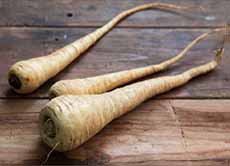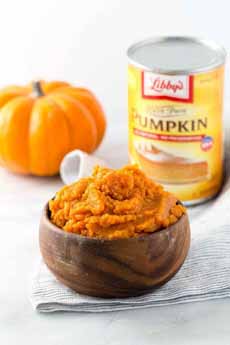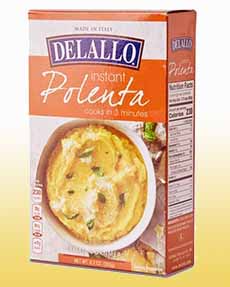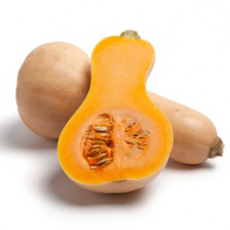RECIPE: Pumpkin Sage Polenta With Roasted Vegetables
|
If you’ve never cooked polenta, it’s a great comfort food—and gluten-free, too. We don’t know why Americans don’t eat more of it—and more parsnips, too, while we’re at it. (Parsnips [photo #2] are one of the delicious fall vegetables roasted for this recipe.) Fall and winter months beg for a dish of warm, creamy polenta. Roast your favorite fall vegetables to top this recipe—and roast extra, so you’ll have them for the next day or two. Then, set it off with a rich pumpkin cream sauce, with notes of cinnamon and nutmeg. We’ve also made and enjoyed the recipe without the cream sauce—but substituted lots of freshly grated parmesan. > There are more polenta recipes below. > Cornmeal vs. polenta. Ingredients For The Polenta 1. PREHEAT the oven to 375˚F. 2. ROAST the vegetables. Toss the vegetables with olive oil in a large mixing bowl and arrange on a nonstick baking sheet. Sprinkle with sage, salt and pepper. Roast the vegetables for 25-30 minutes, or until soft and caramelized. Meanwhile… 3. MAKE the sauce. Warm the heavy cream and butter in a saucepan. Once the butter has melted, stir in 1/4 cup of the pumpkin, the parmesan, cinnamon, nutmeg, and salt. Keep warm on a low simmer until it’s time to serve. 4. COOK the polenta. In a sauce pot, bring the water, chicken stock, and butter to a boil. Slowly whisk in the polenta. Continuously stirring, cook for about 1 minute, or until the polenta begins to thicken. Remove from the heat. Stir in 1 cup of the pumpkin, the sage, and the salt. 5. SERVE. Divide the polenta into individual bowls and top with the roasted vegetables and a generous drizzle of cream sauce.
|
|
|
|
________________ *Parsnips belong to the Apiaceae family, which also includes anise, asafoetida (a spice used in Indian recipes), caraway, celery, chervil, coriander, cumin, dill, fennel and lovage, among others. Why don’t Americans eat more parsnips, a delicious vegetable?
|
||




